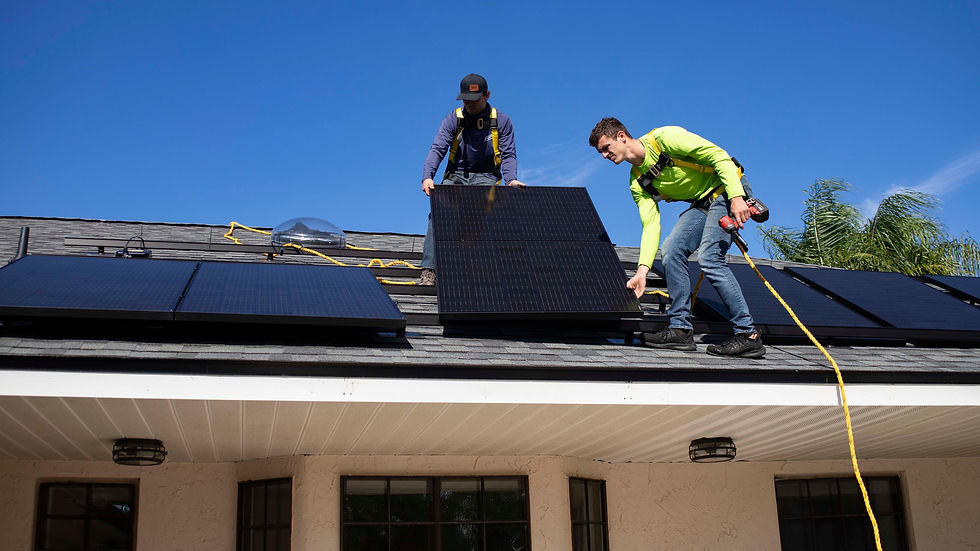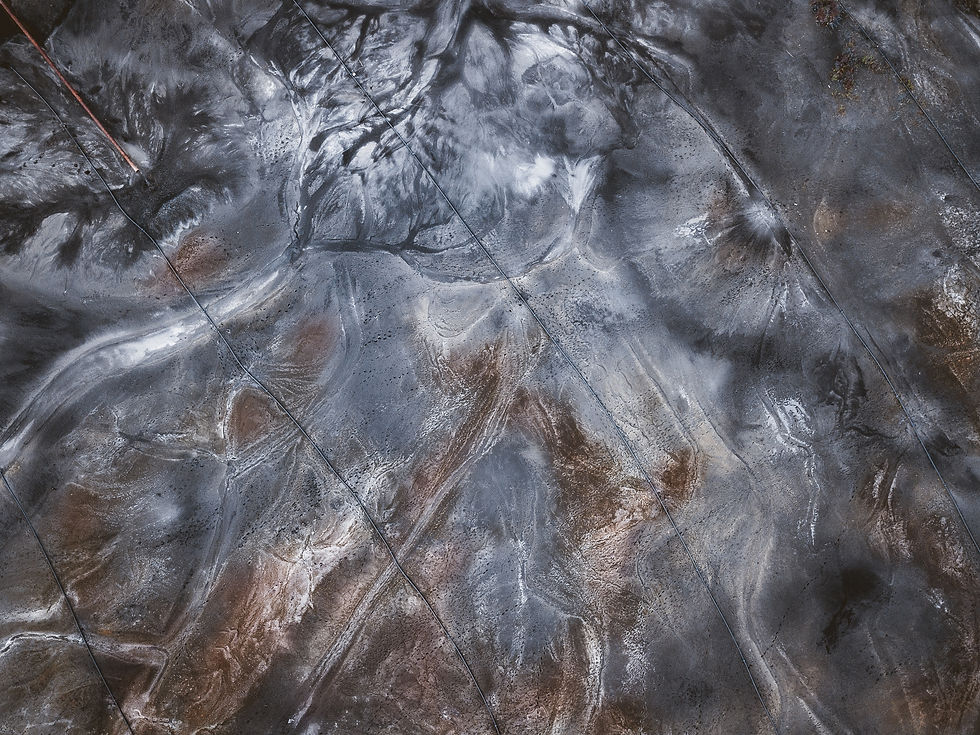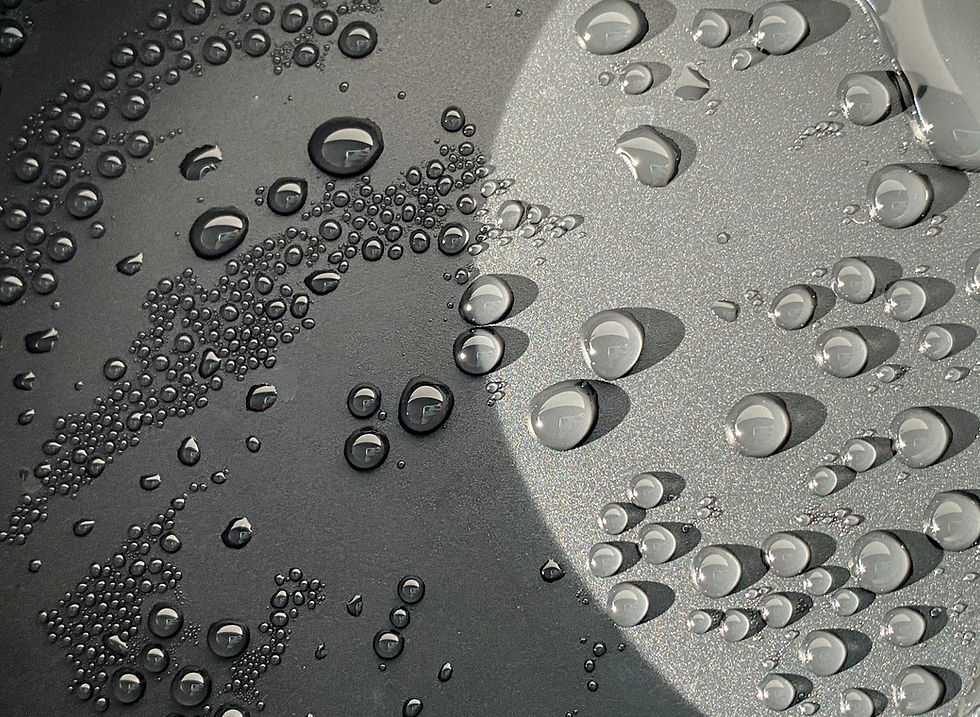Solar Cable Maintenance: Common Issues and How to Fix Them
Updated: May 18, 2023

Ensuring the longevity and safety of your photovoltaic (PV) system goes beyond mere installation - it involves continuous and proper maintenance. One vital component that frequently demands your attention is the solar cable. But, do you know the common issues that can arise with solar cables and how to fix them? Let's delve into this.
Solar Cable Common Issues and How to Fix Them:
Loose Connections
1. Understanding Loose Connections in Solar PV Systems
What are Loose Connections?
Loose connections refer to a condition where the mechanical linkage between components - usually the wire and terminal - isn't secure enough. These can occur at different points in your solar PV system, such as the combiner box, between the module junction box and cables, or between the cables and the inverter.
Why Do Loose Connections Occur?
Loose connections may be due to:
Natural degradation of materials over time
Environmental factors such as vibration and temperature fluctuation
Improper installation
The Impact of Loose Connections
When connections aren't tight, electrical resistance at the contact point, known as contact resistance, increases. This impediment to the electrical current flow forces the current to work harder to pass through, generating heat. If unchecked, this heat generation can lead to:
Cable damage
Harm to other PV system components
Potential fire hazards
2. Detecting Loose Connections
To identify loose connections, regular inspection of your solar PV system is crucial. Signs of loose connections include:
Heat damage signs like discoloration, melting, or a burning smell near connection points
High readings on an infrared thermal camera, indicating heat issues before visible damage occurs
3. Fixing Loose Connections: A Step-by-step Guide
Once you've identified a loose connection, here's how to address it:
Step 1: Ensure Safety
Switch off the PV system before you begin the process
Step 2: Locate the Loose Connection
This could be within a junction box, at a connector, or between a cable and an inverter
Step 3: Tighten the Screw Terminal
If the loose connection is a screw terminal, use a torque screwdriver or a torque wrench to tighten it
Use the correct size tool to avoid damaging the screw or terminal
Adhere to the manufacturer's torque specifications to prevent overtightening and consequent damage
Step 4: Check Friction-fit Connectors
If the connection uses a spring clip or another friction-fit connector, ensure the wire is firmly seated
Replace the connector if it appears worn or damaged
Step 5: Re-check the Connection
After tightening, check the connection for any movement in the wire at the terminal point
Step 6: Monitor the Repaired Connection
Switch on the system and observe the repaired connection to ensure it doesn't overheat
Remember, the goal is a firm, secure connection – not too loose, leading to heat generation, and not too tight, causing damage or presenting a safety hazard.
Damaged cables
1. Understanding Cable Damage
Solar cables can be compromised by several factors:
Mechanical Stress: Physical strain such as bending, pulling, or crushing can damage the cables. These typically occur during installation or due to harsh weather conditions.
Extreme Temperatures: Solar cables are designed to withstand various temperatures, but extreme cold can make them brittle, while extreme heat can cause them to degrade over time.
Corrosive Substances: Exposure to certain chemicals, saltwater, or even certain types of soil can cause cable damage.
2. The Implications of Cable Damage
Damaged solar cables can lead to a variety of issues:
Electrical shorts or intermittent connections
Decreased system performance due to power loss
Potential safety hazards, including fire risks
3. Detecting Damaged Cables
Regular inspection of your solar cables can help detect damage early. You should look for:
Exposed or frayed wires
Signs of burning or melting
Discoloration of cables
Cracks or cuts in the cable insulation
4. Repairing Damaged Solar Cables: A Step-by-Step Guide
Once you've identified damaged cables, you need to address the issue promptly. Here's how:
Step 1: Ensure Safety
Always turn off your PV system before beginning any repair work.
Step 2: Assess the Damage
If the cable is slightly damaged, it may be repairable. If the damage is severe, replacement is likely necessary.
Step 3: Repair Minor Damage
For minor damage, such as small cracks or cuts in the cable insulation, use electrical tape or heat shrink tubing:
Using Electrical Tape: Wrap the tape around the damaged area, ensuring it overlaps for a secure cover.
Using Heat Shrink Tubing: Slide a piece of tubing onto the cable, position it over the damage, then use a heat gun to shrink the tubing securely around the cable.
Step 4: Replace Severely Damaged Cables
For significant damage, replacement of the cable section is the best course of action:
Cutting the Damaged Section: Use wire cutters to remove the damaged section.
Preparing the Cables: Strip the ends of the remaining good cable and the new replacement cable.
Connecting the Cables: Twist together the corresponding wires (positive to positive, negative to negative) and secure them with a wire nut or approved connector. Then, apply heat shrink tubing or electrical tape for extra insulation and protection.
Step 5: Test the Repair
After the repair or replacement, turn your PV system back on and monitor the repaired cable for any issues.
Keep in mind, safety is paramount. If you're unsure about performing these tasks, it's best to hire a professional.
Corrosion
1. Understanding Cable Corrosion
Corrosion in solar cables can occur due to prolonged exposure to the outdoor environment. This phenomenon happens when the metal parts of the cable react with oxygen, water, or other substances, leading to oxidation and the formation of rust or other compounds.
Corrosion is especially prevalent in harsh environments, such as coastal areas with salty air or regions with high pollution levels. It can also occur if water manages to enter the cable due to damaged insulation.
2. Implications of Cable Corrosion
Cable corrosion can cause a host of issues, including:

Increased electrical resistance, leading to heat generation and decreased system performance
Reduced cable longevity and increased risk of failure
Potential safety hazards, such as short circuits or fires
3. Identifying Cable Corrosion
Routine inspection of your solar cables is vital to catch early signs of corrosion. Indicators can include:
Discoloration or rust on metal cable connectors
Reduced performance of your PV system
Any unusual heat generation at the cable connections
4. Addressing Cable Corrosion: A Step-by-Step Guide
If you identify signs of cable corrosion, here's how to handle it:
Step 1: Ensure Safety
As always, before any maintenance work, turn off your PV system to prevent electrical mishaps.
Step 2: Assess the Corrosion
Identify the extent of the corrosion. If it's minimal, you may be able to clean it. If it's extensive, a replacement could be necessary.
Step 3: Clean Mild Corrosion
For mild corrosion, clean the cable connectors with a corrosion-resistant solution or mild acid-like vinegar. Use a soft brush to scrub the area gently.
Rinse the connectors thoroughly with clean water and dry them before reconnecting.
Step 4: Replace Severely Corroded Cables
If the corrosion is severe, it's typically best to replace the entire cable or the corroded connectors.
Step 5: Prevent Future Corrosion
Apply a corrosion inhibitor on the cable connectors to prevent future corrosion.
If the corrosion was due to water ingress, ensure that the cable insulation is intact and adequately sealed against moisture.
Step 6: Test the System
After cleaning or replacing the cables, turn your PV system back on and monitor the affected areas to ensure there are no issues.
Remember, always prioritize safety. If you're not confident in handling these tasks, consider hiring a professional.
Overheating
1. Understanding Cable Overheating
Overheating is a common issue that can negatively impact the performance and lifespan of your solar cables. It generally occurs due to:
Loose Connections: Loose or weak connections can create electrical resistance, which generates heat.
Damaged Insulation: If the cable's insulation is damaged, it can cause overheating due to a lack of necessary heat dissipation.
Excessive Current: Cables that are not rated to handle the amount of current they're carrying can easily overheat.
2. Implications of Cable Overheating
Overheating can lead to several problematic outcomes:
Degradation of cable insulation, leading to further damage and potential safety hazards
Decreased overall system performance due to energy loss
Increased risk of system failure or fires
3. Detecting Cable Overheating
Regular inspection and monitoring can help detect cable overheating. Watch out for:
Unusually warm or hot cables or connectors
Discoloration of cables or connectors
Signs of melted insulation or connectors
4. Addressing Cable Overheating: A Step-by-Step Guide
If you identify signs of overheating, here's how to manage it:

Step 1: Ensure Safety
Always switch off your PV system before starting any repair work.
Step 2: Identify the Cause
Check for loose connections, damaged insulation, or overloaded cables. Use an infrared thermometer or thermal imaging camera, if available, for more accurate detection.
Step 3: Fix Loose Connections
If you find loose connections, tighten them appropriately with a torque wrench or screwdriver. Be careful not to overtighten as it may cause further damage.
Step 4: Repair or Replace Damaged Insulation
If insulation damage is causing overheating, repair the minor damage with electrical tape or heat shrink tubing. For severe damage, replace the entire cable.
Step 5: Manage Cable Overload
If the cable is overloaded, consider resizing your cables or adjusting your system's current to match the cable's rated capacity.
Step 6: Test the System
After making the necessary adjustments or repairs, turn your PV system back on and monitor the cables closely to ensure the overheating issue is resolved.
Remember, safety comes first. If you're unsure or uncomfortable handling these tasks, it's best to seek assistance from a professional.
Water ingress
1. Understanding Water Ingress
Water ingress refers to the unwanted penetration of water into your solar cables. Despite their outdoor-rated design, solar cables can still be susceptible to water ingress due to:
Damaged Insulation: Cracks or cuts in the cable's insulation can allow water to seep in.
Poor Sealing: If connectors are not properly sealed, water can penetrate at these points.
Improper Installation: Cables installed in areas prone to standing water or high moisture levels may be more vulnerable to water ingress.
2. Implications of Water Ingress
When water infiltrates solar cables, it can lead to several issues:
Electrical shorts or ground faults can decrease system performance
Corrosion of metal parts, which can increase electrical resistance and heat generation
Potential safety hazards, such as fires
3. Detecting Water Ingress
Regularly inspect your solar cables and connectors for signs of water ingress, which can include:
Signs of corrosion on the cable connectors
Electrical irregularities, such as intermittent power output
Visible water or moisture inside the cable insulation or connectors
4. Addressing Water Ingress: A Step-by-Step Guide

If you detect signs of water ingress, here are steps to fix the problem:
Step 1: Ensure Safety
As with all electrical work, always shut off your PV system before beginning.
Step 2: Identify the Source of Water Ingress
Examine the cables and connectors closely to determine where the water is entering. Look for damage to the insulation or unsealed connectors.
Step 3: Repair Damaged Insulation
If water is entering through damaged insulation, repair the minor damage with electrical tape or heat shrink tubing. For extensive damage, replace the affected cable.
Step 4: Reseal Connectors
If unsealed or poorly sealed connectors are the issue, disconnect the cables, dry them thoroughly, and then reseal the connectors with appropriate outdoor-rated sealant.
Step 5: Adjust Cable Routing if Necessary
If the cable's location is causing water ingress, you may need to reroute the cable away from areas with standing water or high humidity.
Step 6: Test the System
After making the repairs, turn your PV system back on and closely monitor the repaired areas to ensure the issue is resolved.
Always remember that safety is the top priority. If you feel uncomfortable performing these tasks, consider seeking professional help.
Conclusion
In conclusion, it's evident that regular maintenance and inspection of solar cables are integral for the longevity and efficiency of your PV system. Issues like loose connections, damaged cables, corrosion, overheating, and water ingress can significantly hamper your system's performance, and knowing how to address them is crucial.
However, prevention is always better than cure, and that's where choosing quality solar cables becomes paramount.
Investing in quality solar cables like those from FRCABLE reduces the likelihood of the issues discussed in this blog, saving you from frequent troubleshooting and associated costs in the long run. Additionally, our team of experts is always ready to provide advice and assistance regarding solar cable installation and maintenance, further simplifying your solar journey.
We invite you to explore our range of solar cables and other products. At FRCABLE, we're committed to helping you harness the power of the sun more efficiently and sustainably.
Feel free to contact us anytime if you have questions or need assistance with your solar cabling needs. Thank you for choosing FRCABLE as your trusted partner in your solar energy endeavors.
Commenti